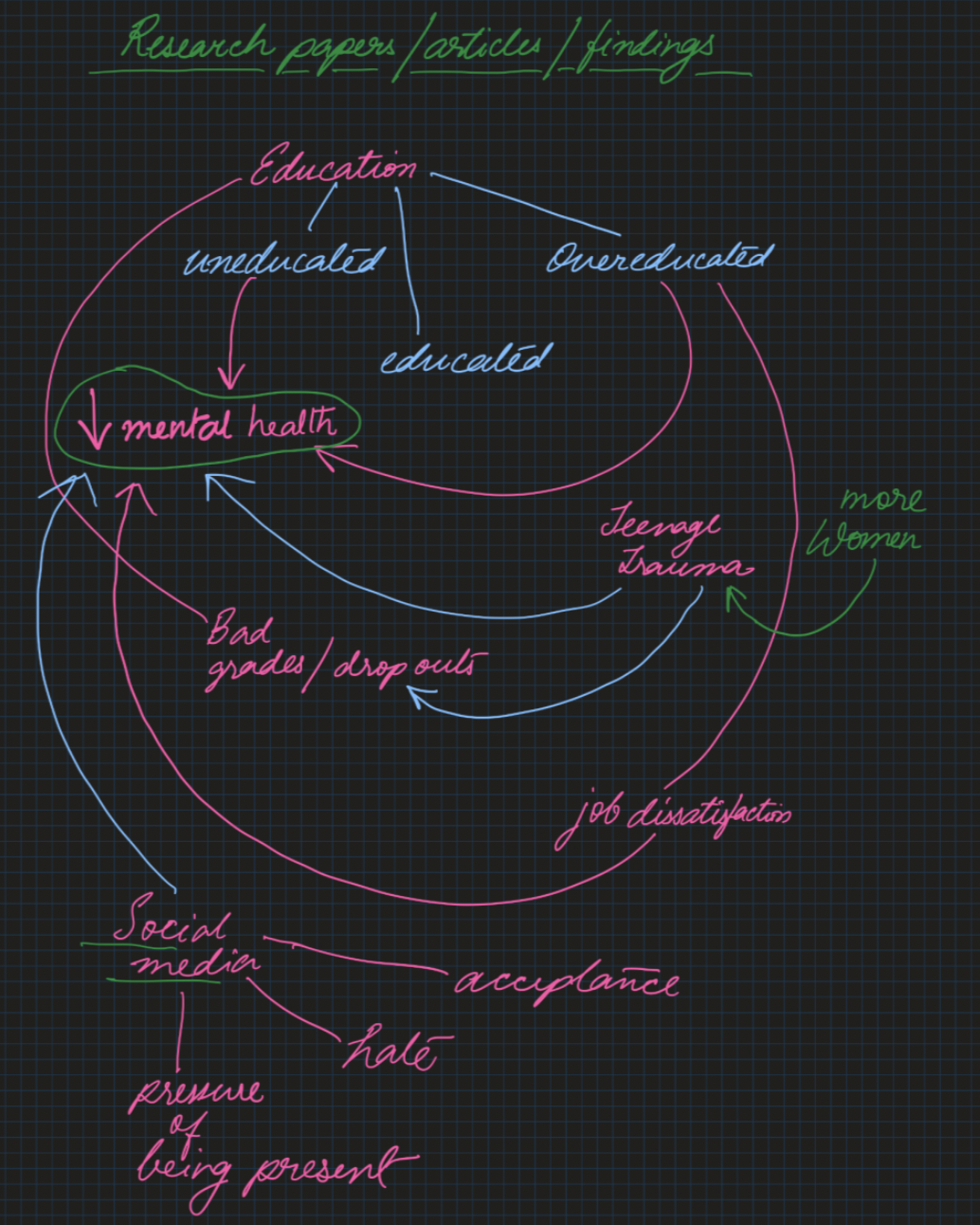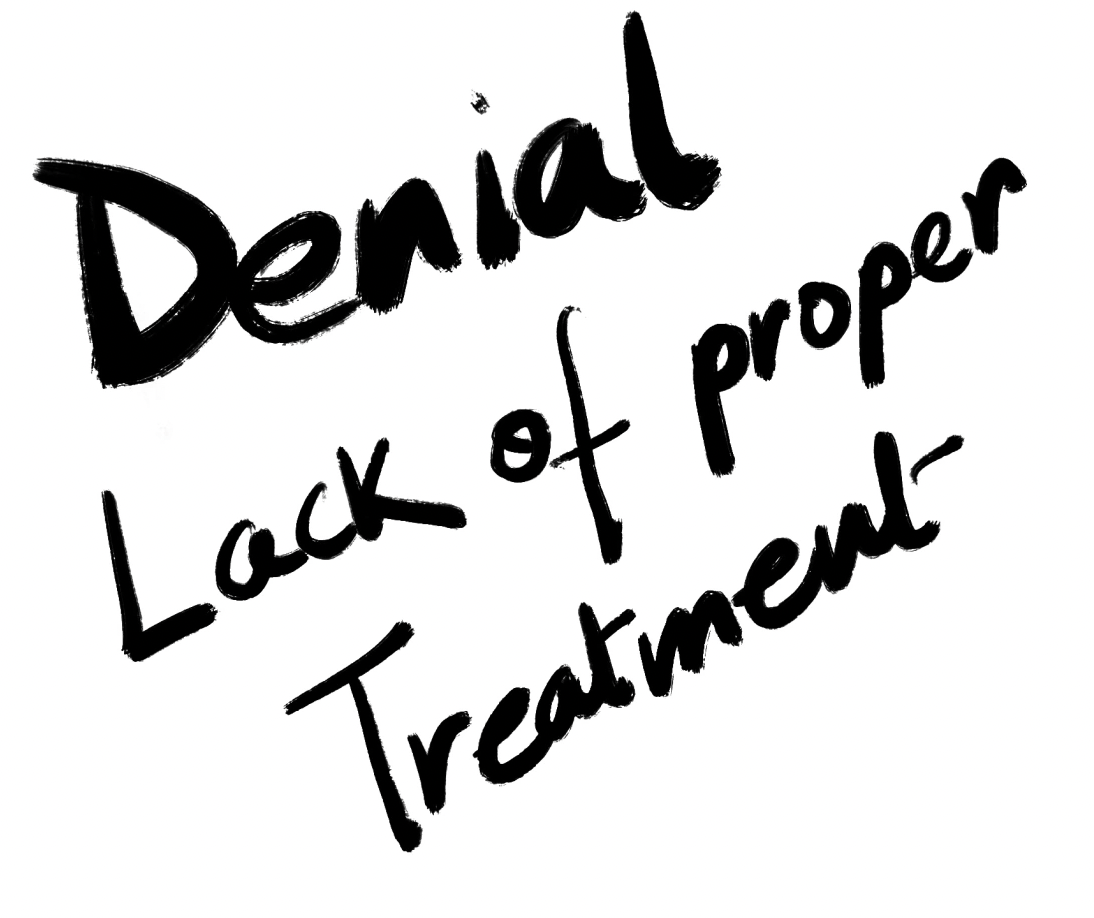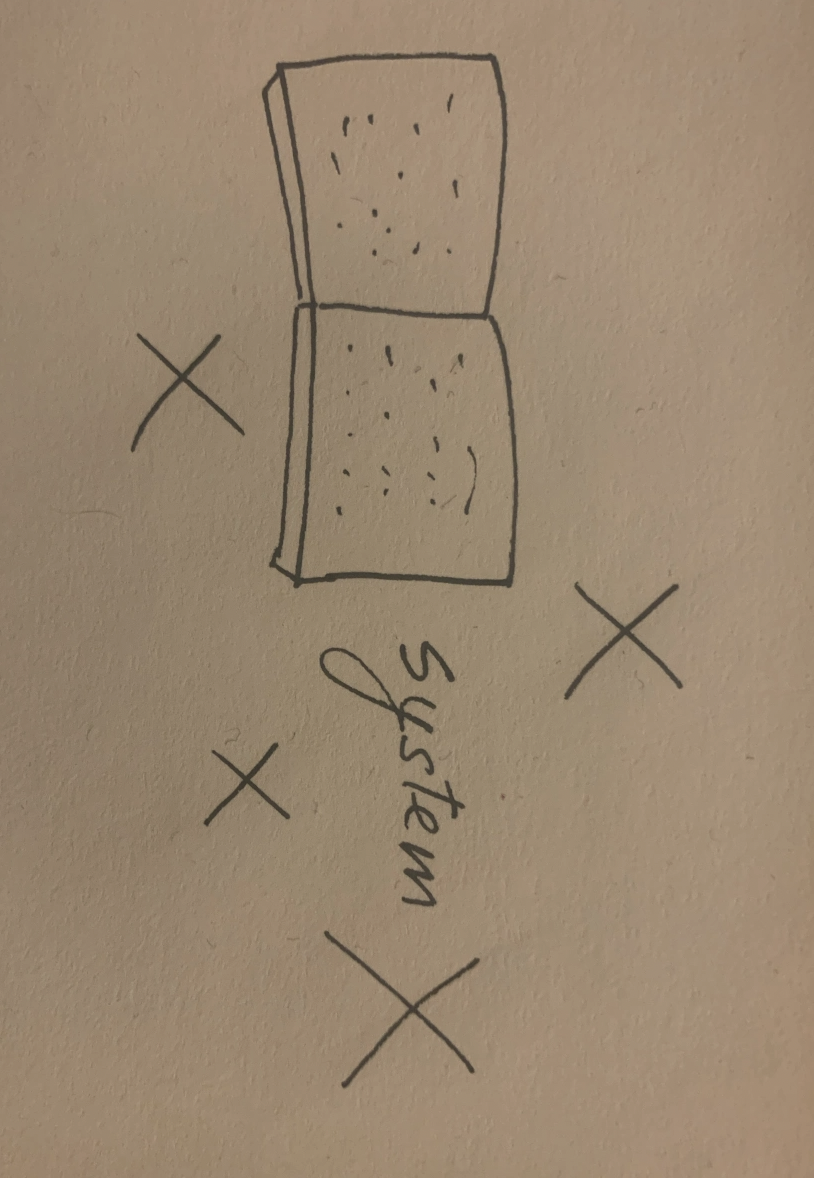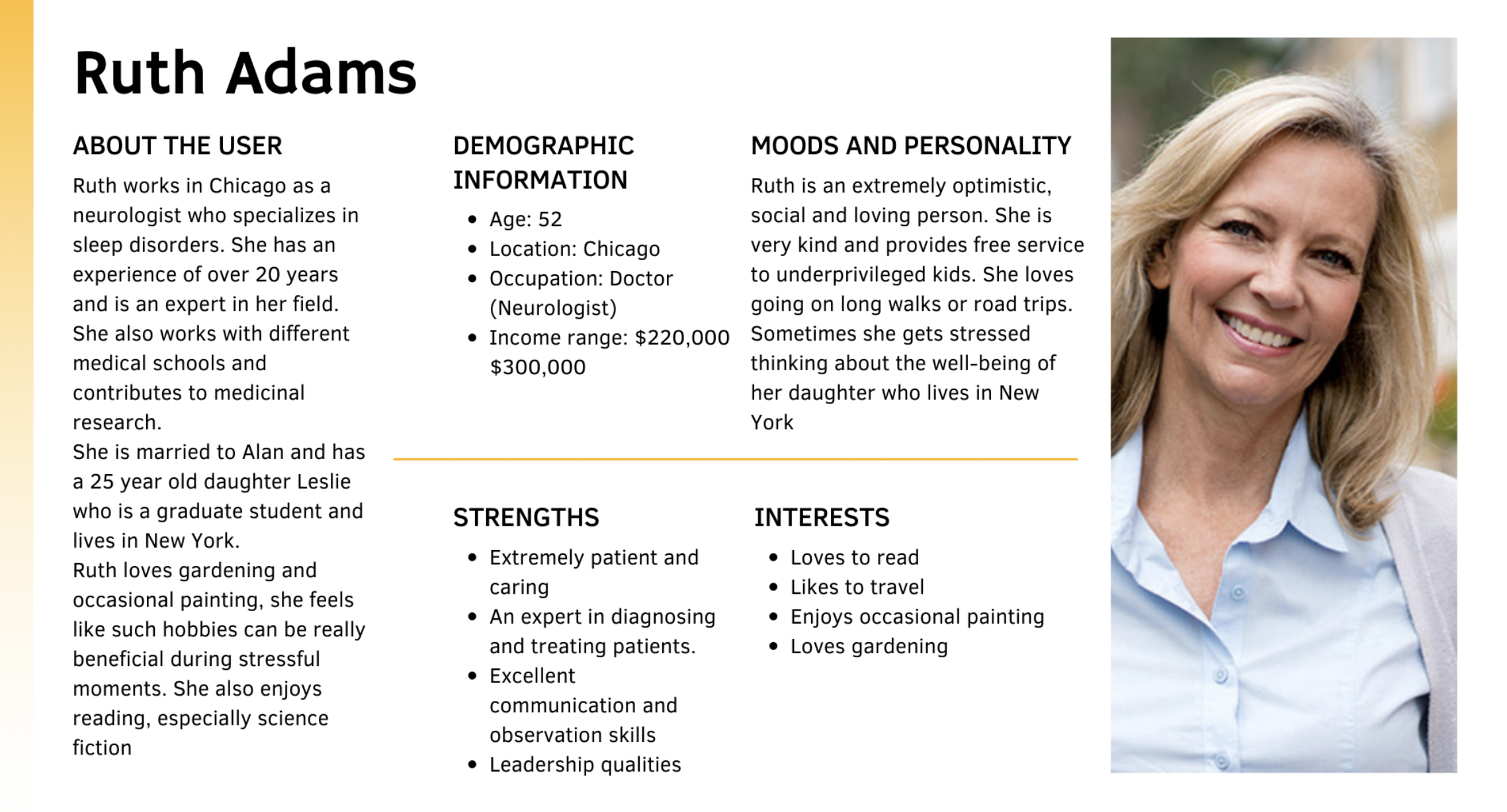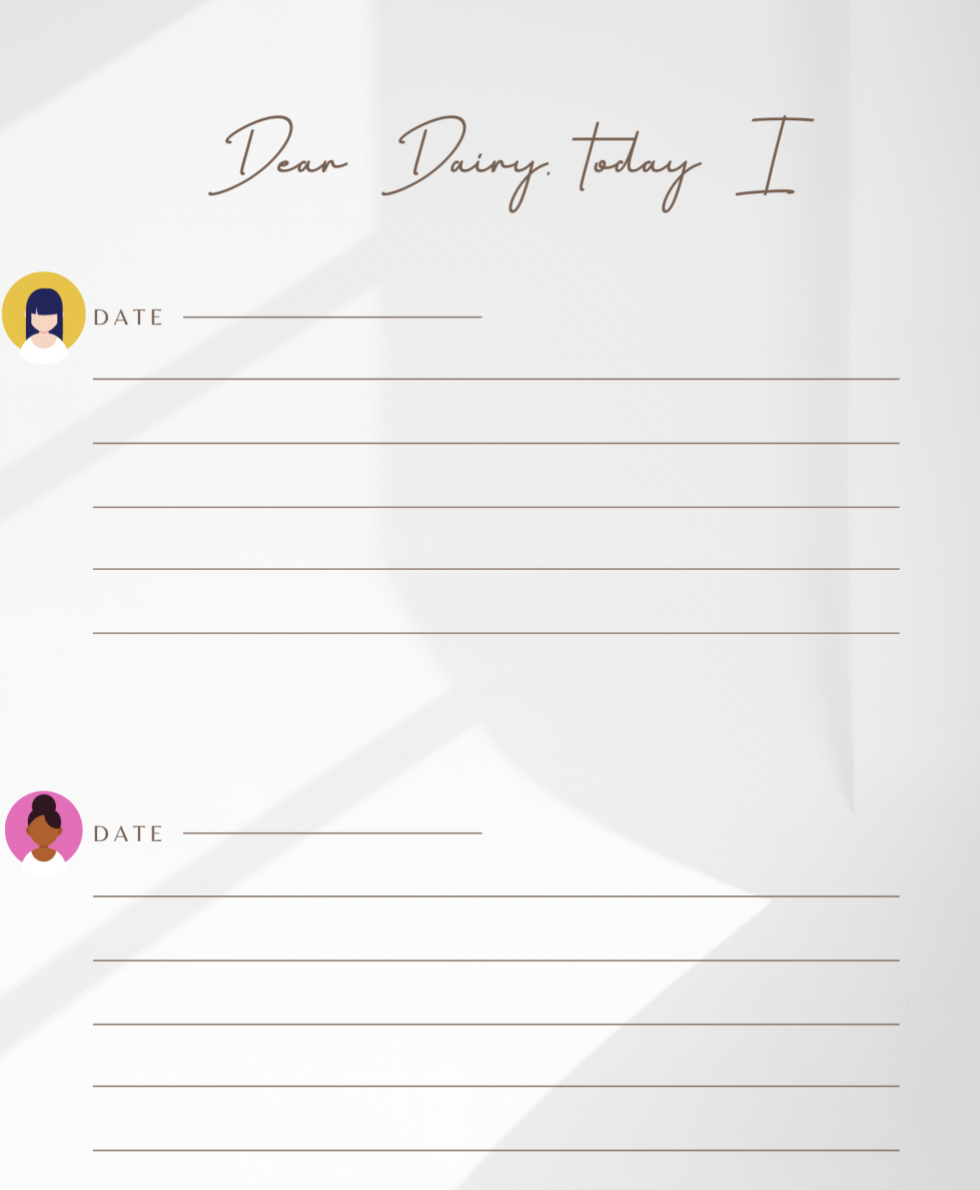Exploring Mental Health
Problem Statement
The aim of this project was to choose a wicked problem and to take a step towards finding possible solutions. The issue that my group and I chose was ‘Deteriorating Mental Health’. We wanted to address this problem by finding a short term solution that would possibly lower anxiety levels and stress among individuals.
Collaborators
Arwa Alsaati, Aman Chopra
My Role
UX Researcher
Duration
30 days
Mess Map & Secondary Research
In the image above, I have explained our approach to solving this problem where we divided the problem into three categorical stages.
In the initial mess map, the idea was to identify the dimensions of the problem, causes and its effects, the stakeholders, and possible approaches to understanding these situations.
In the second map, we categorized all the outputs of the first map to their respective domains.
In the final mess map, we established interconnections between every aspect of the first mess map to the categories we defined in the second map. Here, we also color-coded the map pivoted by domains and added numbers to every box that would show us the count of each domain.
Above are the three stages of our mess map building process starting from images on the first row from left to right and the image on the next row.
My Research Input
My portion of the research was to study the social, emotional and academic aspects of mental health. I chose to study three research papers for these categories respectively to establish a frame of knowledge about them. I have highlighted my findings in the reflections section below.
Primary Research
As part of the primary research phase of our project we chose to perform this research on three categorical paradigms. The focus areas were impacts of mental health on academics, social life and emotional health. To perform the research, we chose stakeholders from healthcare professionals, individuals from industries other than health and academia and current students. Finally, to collect this information we chose three forms of input from the stakeholders – surveys, guided tours, interviews and collages. My part of input was from building collages with stakeholders.
Research Process – Collage
To start the collage building process, I first finalized the questions I would be asking the stakeholders I chose from the focus areas mentioned above. The image on the right lists all the questions I asked. To build the actual collage, I asked the stakeholders their opinions on all the mentioned questions and helped them build a collage out of their ideas. I used newspapers, shopping bags, magazines, and other pieces of stationary that I carried with me while interviewing, to help all the stakeholders embrace their ideas into a collage.
Process Outcome
Below are a few glimpses from the collages I was able to get from the stakeholders I interviewed.
From the questions and collages I was able to collect and study, these were the most common answers I received to people’s impression of effects of mental health.
Poor work life balance
Growing expectations
Loan repayments
Uncertain future
Exams
Grades
Pressure from family
Peer Pressure
Conscious about their looks
Fear of being ridiculed and judged
Unhealthy home environment
Denial and lack of easy access to professional help
One of the working professionals talked about poor work life balance, while the other talked about how growing expectations upon performing well can be really stressful.
Both of the graduate students drew my attention towards the fear of an uncertain future and loan repayments. They along with the undergraduate student consider exams to be a very big factor when it comes to noting things that give them anxiety.
Interestingly, the counselor and the academic advisor had a similar opinion, students are very stressed because of the fear of exams and grades, pressure from family to perform well. Peer Pressure is an important factor that came up during my conversation with the students as well as the advisor and the counselor. The counselor also talked about the insecurities that most teenagers have about the way they look, they tend to get really conscious about their looks. Also, younger students are not always comfortable with speaking their minds out because of the fear of being ridiculed and judged. Unhealthy home environment is also something that came up twice while discussing factors for poor mental health. According to the doctor I contacted, even after recommending professional help to patients, they hesitate to go forward with that because it looks like an over exaggeration to them and hence, Lack of easy access to professional help also seems to be a significant reason for increasing mental health issues.
Analysis
As an approach to solving this problem, we built primary and secondary personas that would help assimilate the challenges that people often face in their journey towards a healthy mental life. Below, I highlight the process we undertook to prepare the personas and eventually how we used these personas to learn about creating temporary yet effective solutions to tackle mental health.
Process
The two distinct tasks we needed were coming up with personas to relay the mental health problems scenario and subsequently come up with design solutions that could solve the issues stated by these personas. We decided to divide and conquer, and structure three independent ideas. Post this, we could discuss these and find scope for collaboration between these ideas.
My idea contribution was that of building a support group. I have explained more about this in the section below. Other than contribution of this idea, I took the initiative of designing the template for primary and building the secondary personas. Along with the personas, I also designed the templates for empathy maps. All the designs are shown below and I used Canva to design all of them.
The Initial Idea
Support Group platform with a Collaborative Journal Feature – A platform where people can maintain collaborative journals.
A lot of people shut themselves down and do not feel comfortable expressing their emotions freely because of the fear of getting judged, especially when they are feeling anxious. In such situations, if they see that a lot of other people also face such issues and feel low, that would kind of prevent them from feeling left out.
One of the most common issues we notice among people who are struggling with mental health is their fear of not being accepted as “normal” in the society. This fear at times starts becoming the core of their issues and builds on to anxiety. It is known that sharing, and talking about one’s problems always tends to help. Hence, this platform would be a place for people to come together and talk about themselves with an open mind.
There is a tendency of maintaining journals among people, generally designed to express themselves. What if there was a platform where people could collaborate and maintain common journals, see each other’s entries and be more comfortable expressing themselves without the fear of not being accepted or being judged? That’s where my thought process took me.
Collaboration
Aman’s idea of generating awareness around mental health and using social media to do it really clicked. People are not going to use such websites or apps until this topic is normalized and people are able to talk about their issues freely. Using social media influencers to generate awareness is a great idea because people follow them. As part of our collaboration, we thought there was a sync in both of our ideas and we came up with a new one.
Social Media campaigns and influencers could be used to steer people towards successfully conducting large scale mental health surveys and the formation of support groups to talk about mental health and their issues. This could act as a common platform to bring people together.
Prototype
The next task was to design the prototype for all issues and solutions we had theoretically worked through the last three weeks. In this post, I will reflect on the process and formulation of our prototype.
Ideation
We believe the best portrayal of our research and ideas would come through a website, and therefore we chose to design a website as our final prototype. A few key components that we used in our website included:
Influencer Quiz: This portion is an awareness creation challenge for the users of the platform. An example question could be, Which influencer is the user most associated to?
Journal Entry: It is a collaborative journal meant for sharing ideas, experiences and everything here is anonymous. People can express their thoughts and read others’ entries without judgement.
AR Panda: We have an augmented reality web application embedded in the website and this feature is an AR caretaker that virtually stays with you like a support assistant. It can chat and take your feedback about the website. Think of it as your AR buddy.
Daily Checkup: This is a friendly remainder that keeps track of your progress on the forums and also has the capability of connecting and managing therapist appointments.
Resources: As part of additional reading and more supplemental resources, this section offers information that could potentially help users in various ways.
Wireframes and Prototypes
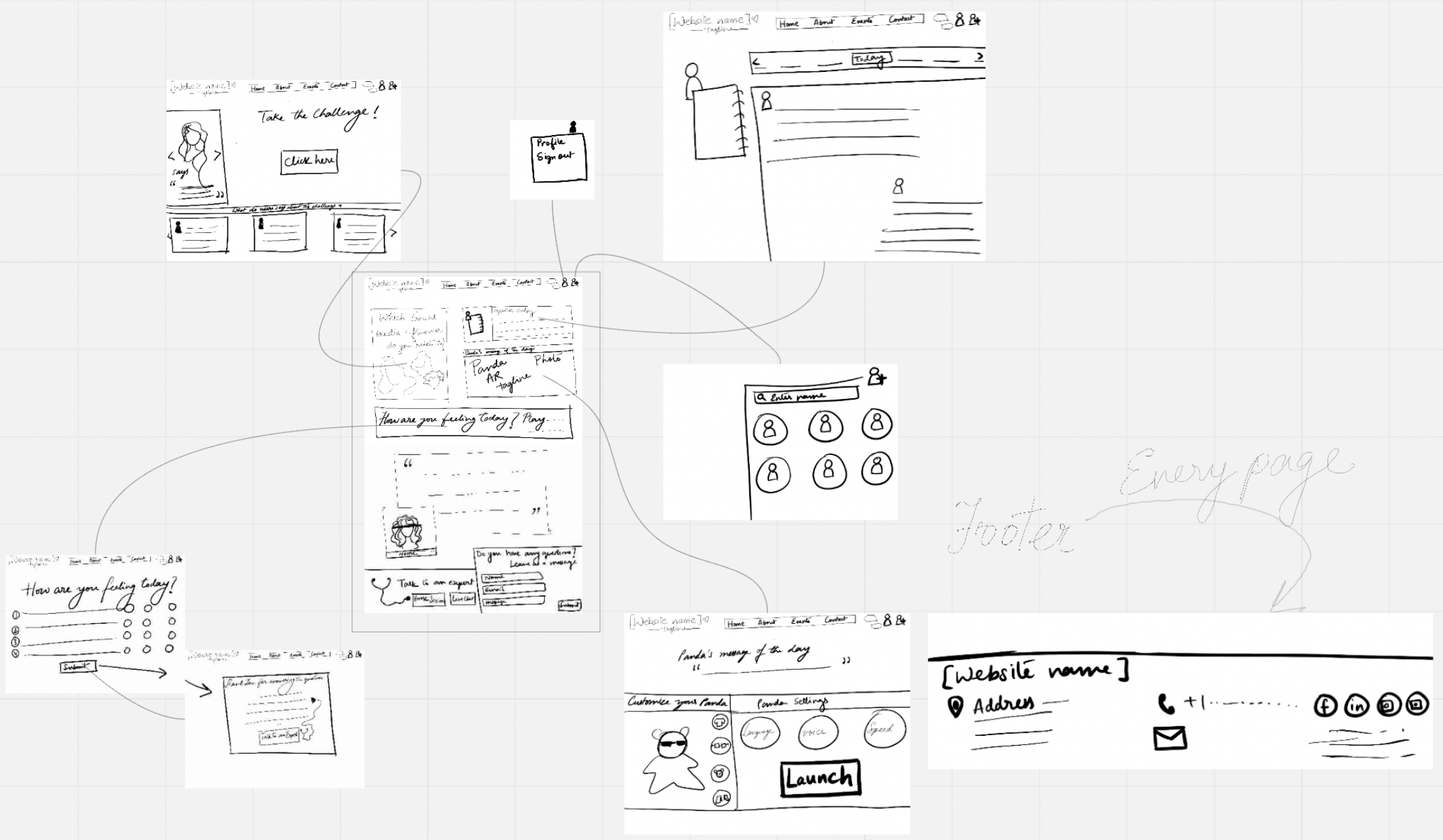
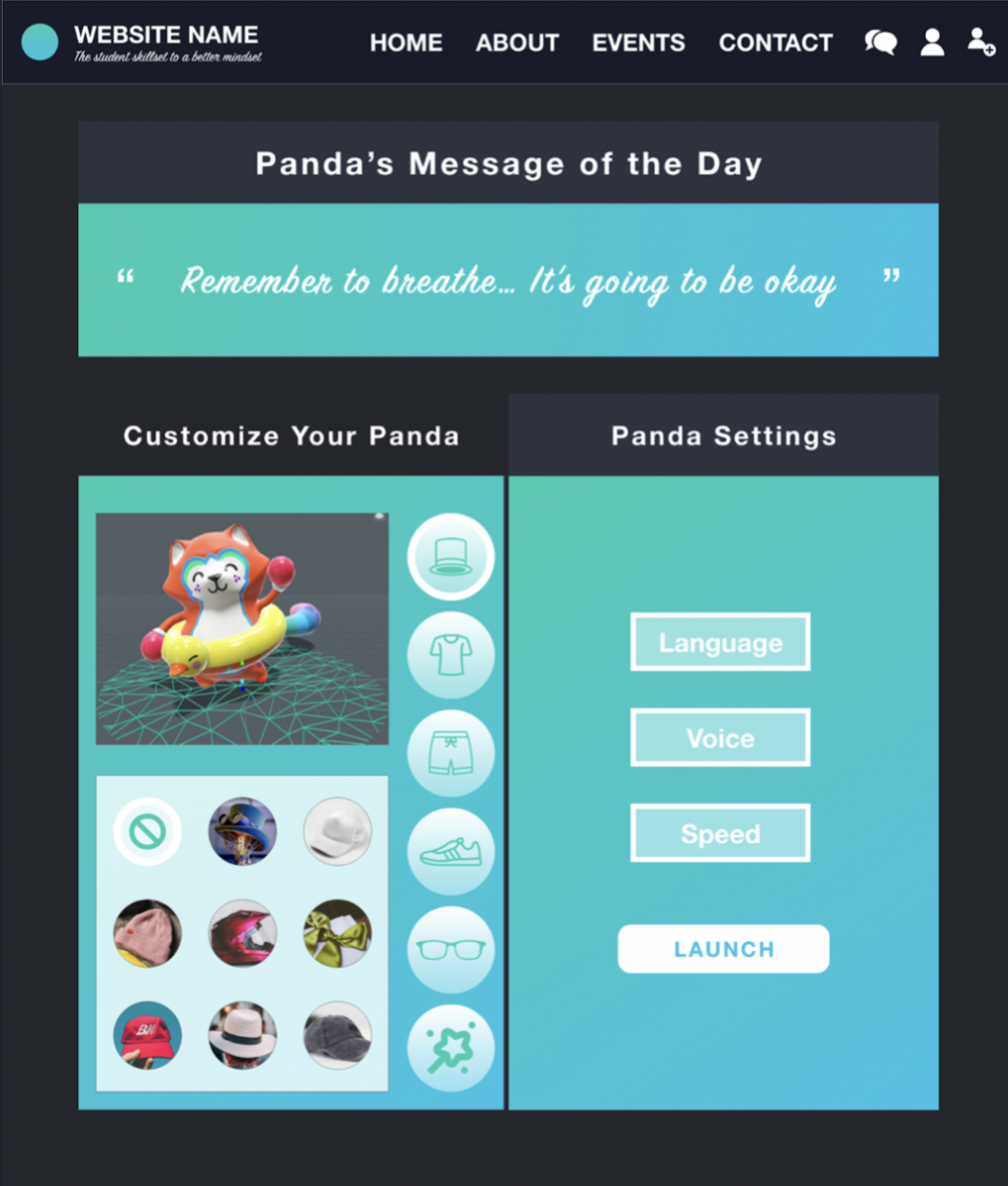
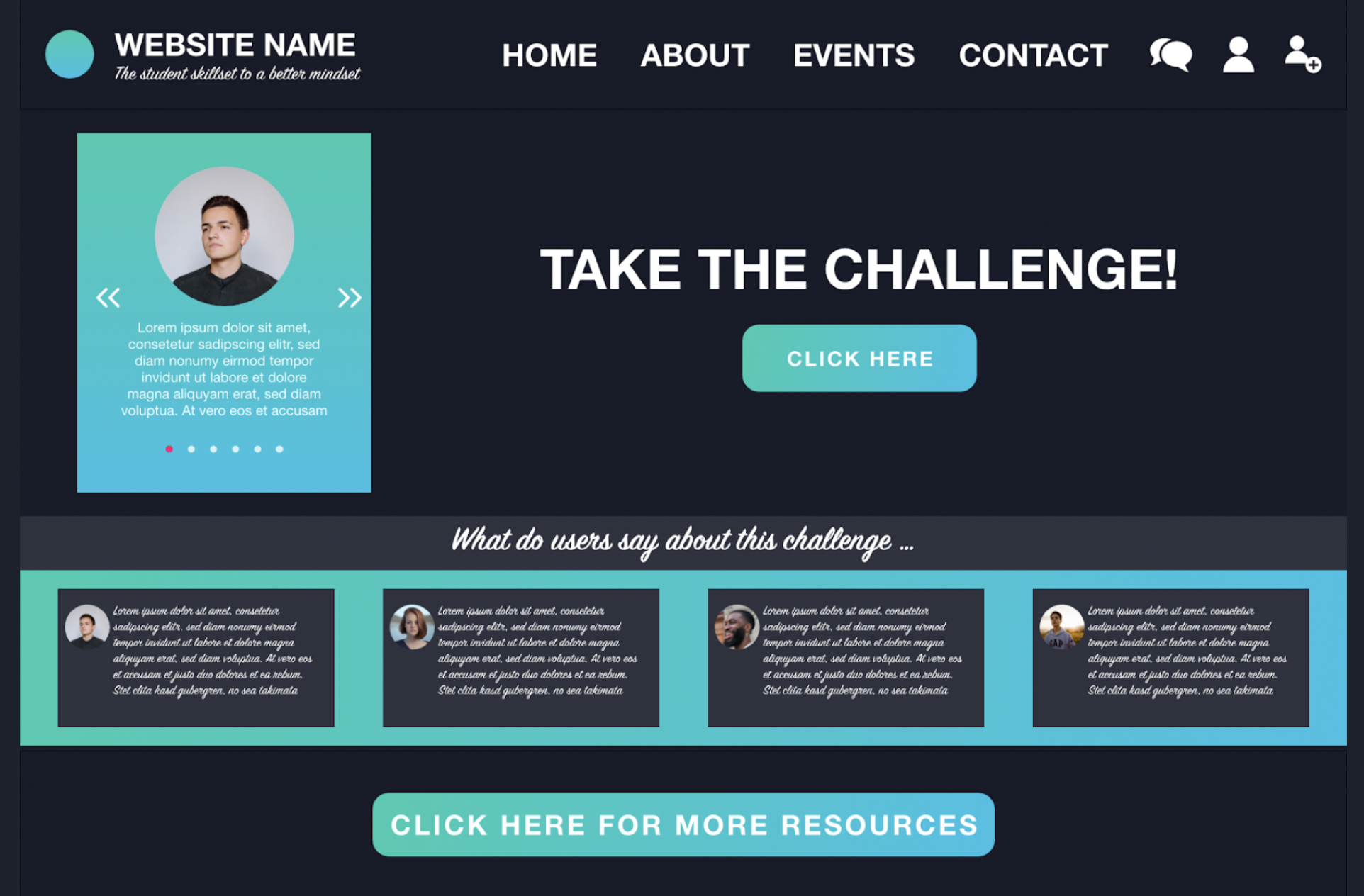
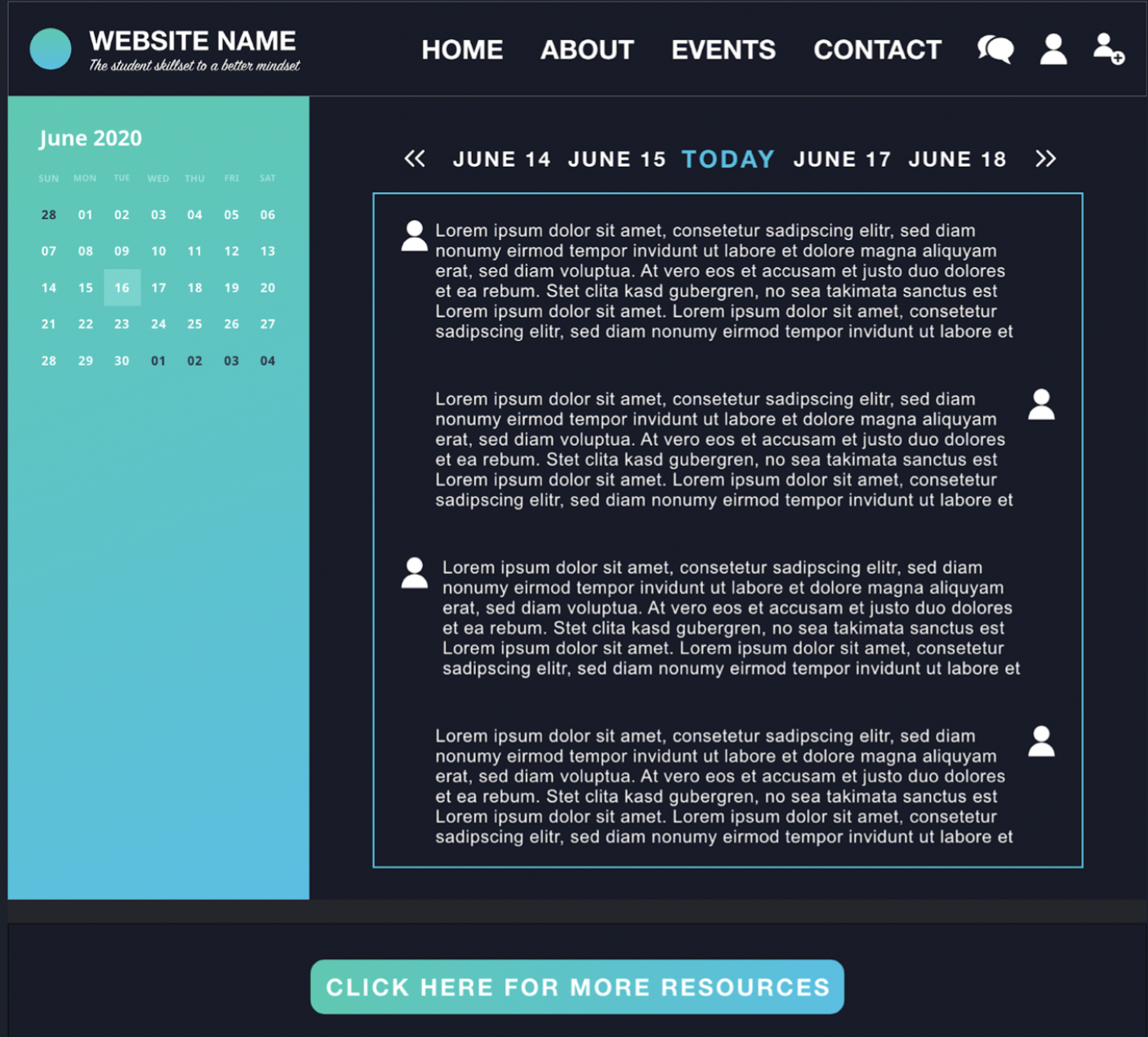

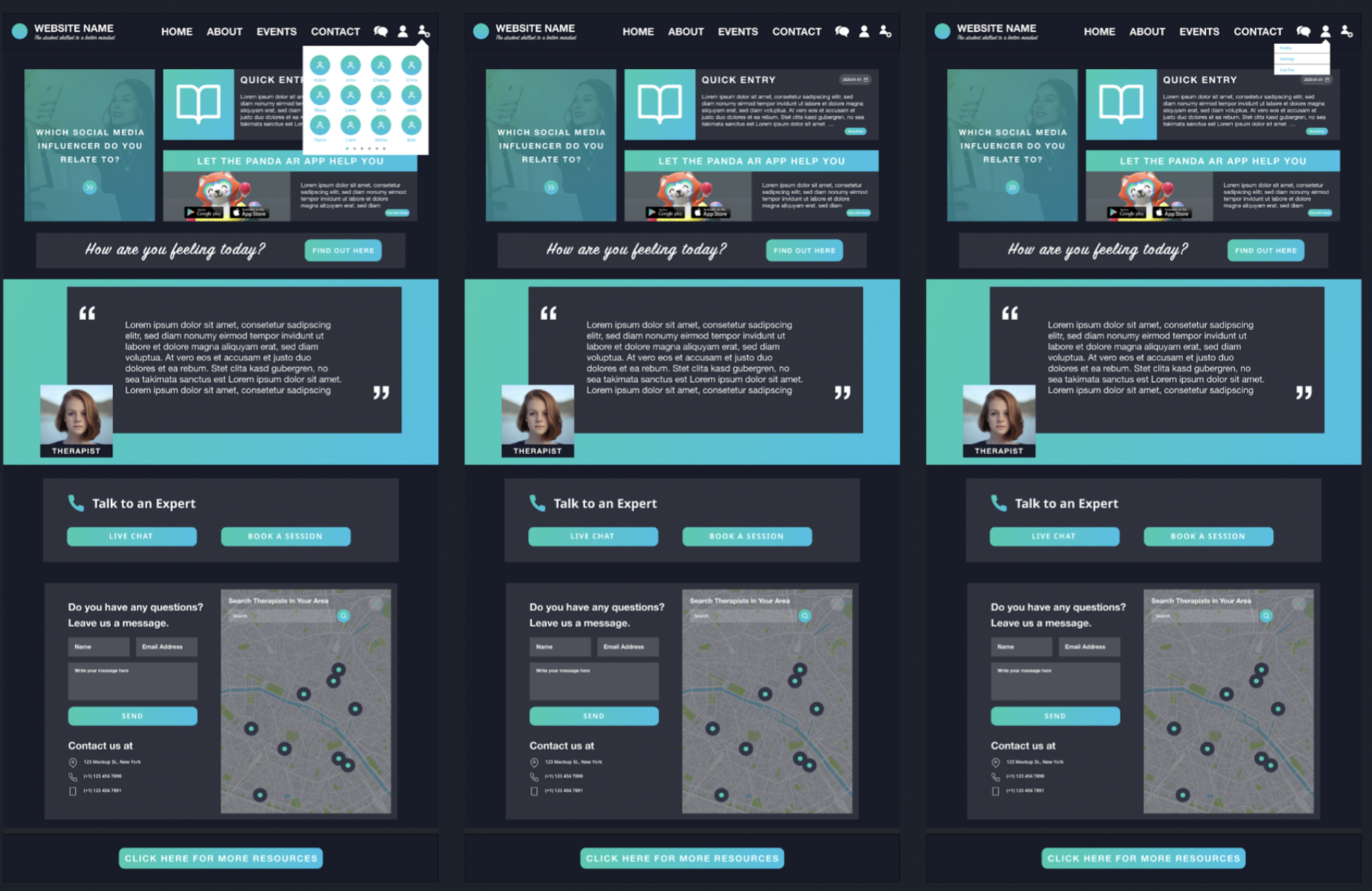

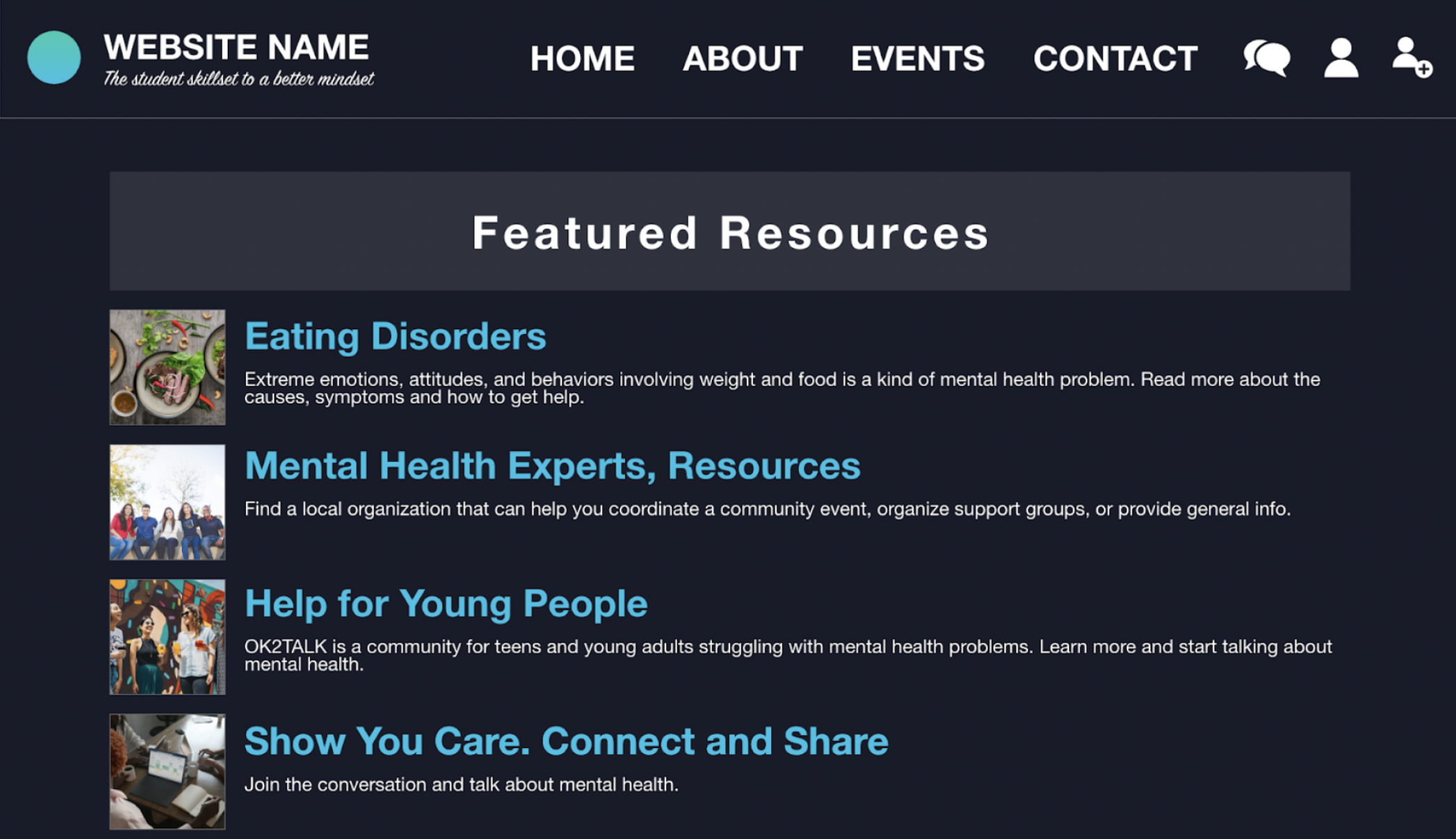
Above are some prototype designs and wireframes that resemble our website. Our design is incorporated for both light and dark mode screens.
The Team – Spandita, Aman, Arwa
Every experience in life becomes part of a learning process and this was taught me a lot of things, especially because I was working with the best people. Mental Health, as a research topic is gigantic in breadth and complex to understand. We had not imagined that research could be informative and yet stay fun. We learnt about a structured way of approaching a complicated problem and developed a simple plan to walk through it, that could potentially be used to every other problem we encounter in the future. The learning curve hence, was phenomenal.





